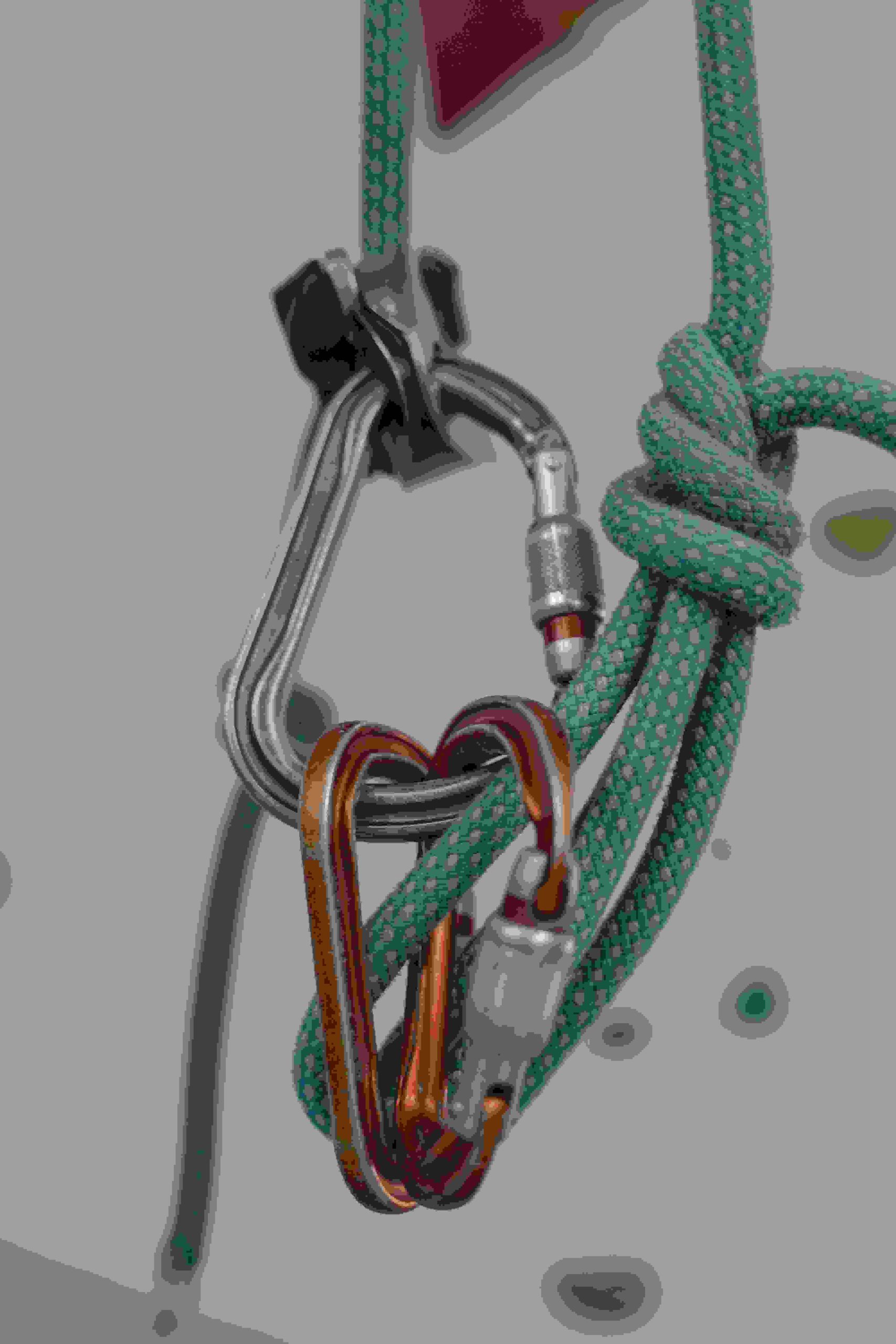Why Mammut Climbing Ropes Are a Top Choice for Climbers
Imagine you’re halfway up a jagged multi-pitch route, the wind howling, your fingers gripping tiny holds, and your rope—your lifeline—threaded through a sharp edge below.
In moments like these, you need gear you can trust. For over 160 years, Mammut, a Swiss brand founded in 1862, has been crafting climbing ropes that climbers rely on for safety, durability, and performance. Known for innovations like Core Protect technology and triple-certified ropes, Mammut sets the standard in the climbing world. Whether you’re a gym beginner or an alpine veteran, choosing the right rope can feel overwhelming. This article dives deep into Mammut’s climbing ropes, addressing common concerns like versatility, durability, and sustainability, to help you find the perfect rope for your next adventure.
Why Mammut Climbing Ropes Stand Out in the Market
Climbers often wonder if a premium rope like Mammut’s is worth the investment. The answer lies in Mammut’s blend of cutting-edge technology and rigorous safety standards. Since its founding, Mammut has prioritized innovation. Their Core Protect technology, featured in ropes like the 9.5mm Alpine Core Protect, integrates an aramid sheath (similar to Kevlar) to enhance cut resistance by up to 50% compared to standard ropes, making it ideal for sharp rock or ice routes. Mammut also offers triple-certified ropes, such as the 8.0mm Phoenix, which can be used as a single, half, or twin rope, offering unmatched versatility for climbers tackling varied terrain.
Safety is non-negotiable, and Mammut adheres to the International Climbing and Mountaineering Federation (UIAA) standards. For example, their 9.5mm Crag Dry rope withstands 7–8 UIAA falls and has a maximum impact force of 8.8 kN, ensuring climbers stay secure during dynamic falls. The high sheath proportion (up to 48 bobbin count in Workhorse ropes) boosts abrasion resistance, extending rope life even on rough granite. Reviews from sources like OutdoorGearLab praise the 9.5mm Crag Classic for its “supple handling and durability,” making it a favorite among sport climbers. With these features, Mammut ropes aren’t just gear—they’re a commitment to performance and safety.
Single, Half, or Twin: Decoding Mammut’s Climbing Rope Types for Your Climbing Style
Choosing the right rope type can be daunting with the variety of climbing disciplines. Mammut simplifies this with a range of single, half, and twin ropes tailored to specific needs:
- Single Ropes: Ideal for sport climbing and cragging, single ropes like the 9.5mm Crag Dry (60m, 58 g/m) are straightforward to use, clipping into quickdraws on bolted routes or serving as a top-rope in the gym. Their thicker diameters (9.5–10.2mm) balance durability and handling, perfect for beginners or frequent craggers.
- Half Ropes: Designed for trad and alpine climbing, half ropes like the 8.0mm Core Protect (37 g/m) allow climbers to clip each rope independently, reducing rope drag on wandering routes. Their high fall ratings (up to 18 UIAA falls as a half rope) ensure reliability on long, technical climbs.
- Twin Ropes: Lightweight and compact, twin ropes like the 7.5mm Twilight (38 g/m) are used together for ice and mixed routes, offering redundancy and minimal weight for fast ascents in extreme conditions.
Mammut’s triple-certified ropes, like the 8.0mm Phoenix, are a game-changer for climbers who switch between disciplines. Certified as a single, half, and twin rope, it’s a versatile option for everything from sport crags to alpine adventures. Not sure where to start? For gym or sport climbing, choose a single rope. Trad climbers should opt for half ropes, while alpine and ice climbers will benefit from twin ropes. Mammut’s clear labeling and detailed specs on their website make it easy to match your climbing style to the right rope.
How to Pick the Perfect Mammut Climbing Rope: Diameter and Length Simplified
The array of rope diameters and lengths can overwhelm even seasoned climbers. Mammut’s range is designed to cater to every need, with clear distinctions:
- 8.5–9.3mm: Lightweight and versatile, ropes like the 9.0mm Crag Sender (55 g/m) are perfect for sport and alpine climbing where weight savings matter on long approaches.
- 9.4–9.8mm: Balanced for sport and trad, the 9.5mm Crag Classic (60 g/m) offers excellent handling and durability for multi-pitch routes or frequent cragging.
- 9.9–11mm: Built for durability, ropes like the 10.2mm Gravity (70 g/m) shine in gym settings or top-roping, where abrasion resistance is key.
Length is equally critical: 30m ropes suffice for indoor climbing, 60–70m ropes are standard for single-pitch cragging, and 70m+ ropes are essential for multi-pitch routes. For example, the 9.5mm Crag Dry in 70m is a go-to for multi-pitch sport routes, while the 8.0mm Core Protect in 60m suits alpine missions. To help visualize, here’s a comparison of popular Mammut ropes:
| Rope Model | Diameter | Weight (g/m) | UIAA Falls | Best For |
|---|---|---|---|---|
| 9.5mm Crag Dry | 9.5mm | 58 | 7–8 | Sport/Multi-Pitch |
| 8.0mm Core Protect | 8.0mm | 37 | 18 (half) | Trad/Alpine |
| 10.2mm Gravity | 10.2mm | 70 | 10–11 | Gym/Top-Rope |
This table, combined with Mammut’s online rope selector tool, helps climbers match their needs to the perfect rope, eliminating guesswork.
Conquer Any Condition with Mammut’s Dry-Treated Ropes
Wet or icy conditions can ruin a climb, turning a rope into a heavy, frozen liability. Mammut’s Dry-treated ropes, like the 9.5mm Crag Dry and 9.0mm Crag Sender Dry, are engineered to repel water, absorbing less than 1.5% water per UIAA standards. This treatment prevents weight gain, maintains suppleness, and extends rope life in harsh environments like snowy alpine routes or coastal crags. For instance, the 9.5mm Crag Dry performs reliably in wet conditions, unlike non-treated ropes that can absorb up to 50% of their weight in water, becoming stiff and hard to handle.
Compared to competitors, Mammut’s Dry treatment holds its own. The Sterling Aero 9.2 XEROS (57 g/m) offers similar water resistance but lacks Mammut’s Core Protect option, while the Edelrid Swift Eco Dry (8.9mm, 52 g/m) is lighter but less durable on abrasive rock. Climbers tackling wet or icy routes will find Mammut’s Dry ropes a reliable choice for staying light and nimble.
Keep Your Mammut Rope in Top Shape: Care and Maintenance Tips
A rope is an investment, and premature wear can be a costly frustration. Proper care extends the life of your Mammut rope, ensuring it performs when it matters most. Here’s how to maintain it:
- Cleaning: Wash your rope with lukewarm water and a mild soap like Mammut Rope Wash. Avoid harsh detergents that can degrade the nylon fibers. For example, after a muddy trad climb, rinse the 9.5mm Crag Classic to remove grit that accelerates sheath wear.
- Storage: Store your rope in a cool, dry place, ideally in a Mammut rope bag to prevent kinks and UV damage. Avoid leaving it in a hot car trunk, which can weaken the fibers over time.
- Inspection: Regularly check for cuts, fuzzing, or core exposure. Mammut recommends retiring a rope after significant damage (e.g., a deep cut exposing the core) or after 10 years of light use, 1–3 years of heavy use, or a single severe fall with high impact force.
By following these steps, climbers can keep their Mammut rope—like the durable 10.2mm Gravity—in top condition for hundreds of pitches, saving money and ensuring safety.
Safety First: How Mammut Climbing Ropes Ensure Protection on the Wall
Nothing is more critical than a rope’s ability to protect during a fall or on sharp terrain. Mammut ropes are engineered for safety, with features like:
- High Fall Ratings: The 9.5mm Crag Classic withstands 7–8 UIAA falls, while the 8.0mm Core Protect handles up to 18 falls as a half rope, ensuring reliability in dynamic scenarios.
- Core Protect Technology: Found in ropes like the 9.5mm Alpine Core Protect, this aramid layer reduces cut risk by up to 50%, ideal for routes with sharp edges or falling rock.
- Middle Markers and Bi-Pattern Designs: These features, standard on ropes like the 9.5mm Crag Dry, make it easy to find the rope’s midpoint or distinguish ends, streamlining belay setups.
Professional climber Jonas Schild, who relies on the 9.5mm Crag Dry for big-wall routes in Patagonia, praises its “unmatched reliability on abrasive granite.” Mammut’s adherence to UIAA standards (e.g., max 12 kN impact force for single ropes) ensures climbers stay secure, even in worst-case scenarios.
Climb Green: Mammut’s Close The Loop Sustainability Program
Many climbers want to reduce their environmental impact without sacrificing gear quality. Mammut’s Close The Loop program, in partnership with Protect Our Winters (POW), addresses this by recycling old ropes into new products like jackets or bags. Climbers can trade in used ropes at Mammut stores, reducing landfill waste and supporting a circular economy. Mammut’s broader sustainability efforts include using bluesign®-certified materials and aiming for climate neutrality by 2050. For example, producing a 60m polyamide rope generates significant emissions, but recycling mitigates this impact. This program resonates with eco-conscious climbers who want high-performance gear with a smaller footprint.
Mammut vs. Competitors: Why Mammut Climbing Ropes Come Out on Top
With so many brands vying for attention, how do Mammut ropes stack up? Let’s compare:
- Mammut 9.5mm Crag Classic vs. Sterling Aero 9.2 XEROS: The Crag Classic (60 g/m) offers better handling and durability, though it’s slightly heavier than the Aero (57 g/m). OutdoorGearLab notes the Crag Classic’s “exceptional suppleness” after heavy use.
- Mammut 8.0mm Core Protect vs. Edelrid Swift Eco Dry: Both are lightweight (37 g/m vs. 52 g/m), but Mammut’s aramid sheath provides superior cut resistance, a key advantage on rocky alpine routes.
Switchback Travel’s 2025 review ranks the 9.5mm Crag Dry among the top ropes for its versatility and “buttery-smooth handling,” making Mammut a standout for climbers prioritizing performance and longevity.
Real Climbers, Real Results: Mammut Ropes in Action
Skeptical of marketing claims? Real-world performance tells the story. Professional climber Stephan Siegrist relies on the 9.0mm Crag Sender for alpine routes in the Alps, citing its “lightweight design and flawless handling.” Testing by OutdoorGearLab found the 9.5mm Crag Classic remained supple after 200 pitches, outperforming many competitors. Local climbers also rave about the 10.2mm Gravity for gym use, with one Colorado climber noting, “It’s taken a beating on top-rope routes and still feels solid after a year.” These stories confirm Mammut ropes deliver when the stakes are high.
Find Your Perfect Mammut Rope and Climb with Confidence
Mammut climbing ropes combine innovation, safety, and sustainability to meet the needs of every climber. From the versatile 9.5mm Crag Dry to the cut-resistant 8.0mm Core Protect, Mammut’s range covers sport, trad, alpine, and gym climbing with unmatched reliability. Their Dry treatment conquers wet conditions, while features like high fall ratings and middle markers ensure safety. Plus, the Close The Loop program lets you climb with a clear conscience. Ready to find your perfect rope? Visit Mammut’s website or a local retailer to explore options like the 9.5mm Crag Dry or 10.2mm Gravity. Assess your climbing style—sport, trad, or alpine—and choose a Mammut rope that’s not just gear, but your lifeline to the next summit.




